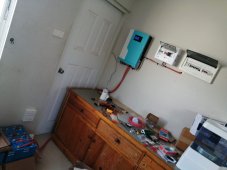Jamie.sanders
New Member
- Joined
- Dec 1, 2019
- Messages
- 159
I done a search didn't find exactly what I'm looking for. An internet search is suspect as to who owns the site your checking.
I was wondering if their is a list of the best quality inverters, or the best bang for the buck inverters, I understand
the right inverter depends on your system, I'm just talking name brand in general. thanks in Advance.
what are your favorites?
Thanks in advance.
as for what I have, 5280 watts of panals
2 midnight 150 charge controllers
three, 24 volt 280ah lithium batteries.
I will powering 110v items only and only need about 8,000 watts, I'm just powering emergency essentials.
I was wondering if their is a list of the best quality inverters, or the best bang for the buck inverters, I understand
the right inverter depends on your system, I'm just talking name brand in general. thanks in Advance.
what are your favorites?
Thanks in advance.
as for what I have, 5280 watts of panals
2 midnight 150 charge controllers
three, 24 volt 280ah lithium batteries.
I will powering 110v items only and only need about 8,000 watts, I'm just powering emergency essentials.
Last edited:





